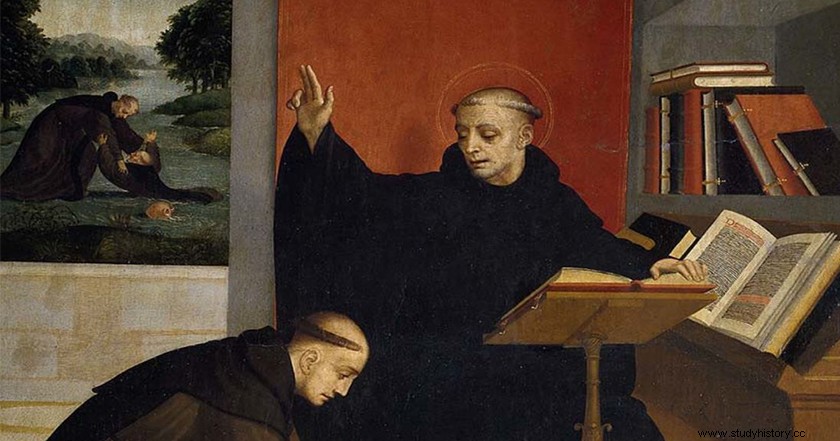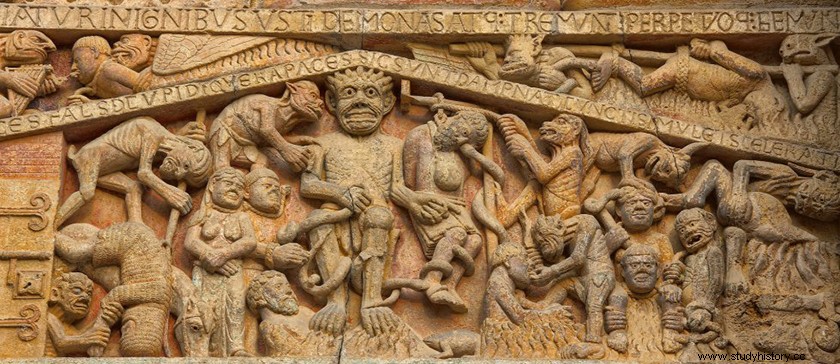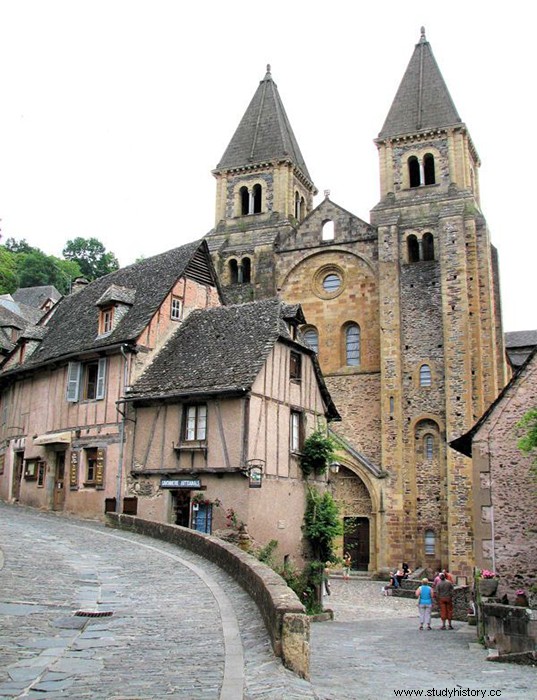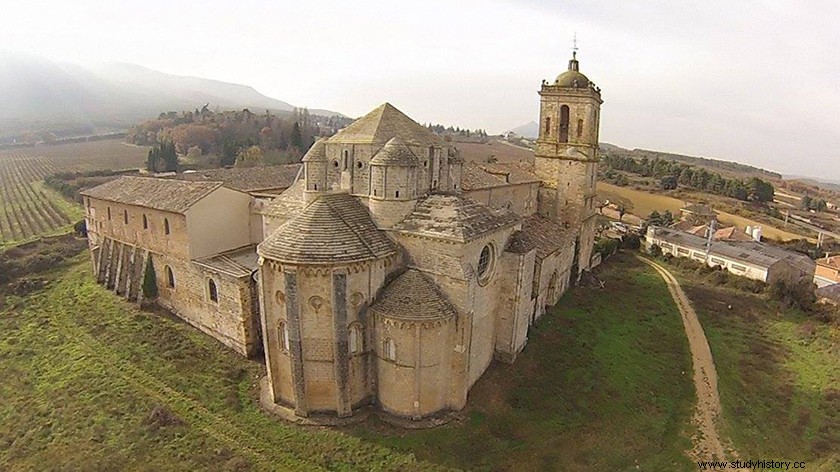
We move to the beginning of the 10th century, to meet a Europe plunged into a great crisis of faith in Christianity. A religion, which, on the other hand, does not stop expanding geographically to the north, to the east, and also to the south, reaching areas of the Iberian Peninsula in dispute with Islam. But with a main problem, which was leading him to become a giant with feet of clay.
The entire territory after the fall of the Western Roman Empire, five centuries ago, had become remarkably fragmented, giving rise to various medieval kingdoms. The Roman cities had given way to small communities, where religiosity flooded the main aspects of daily life, and where kings and lords controlled, in addition to the Christian church, the rest of medieval society, through political, economic, and social systems. feudalism.
The churches had occupied the entire geography, each community no matter how small it was had its own, mostly erected by the nobility of the place to meet the fervent needs of their servants. In front of them they used to place ordinary priests, who little by little had shown their religious qualities, not to mention their poor preparation and less education.
A similar thing happened with the monasteries, in this case small religious communities at the service of kings and high nobility. They were founded by these for the economic control of a certain geographical space, generally areas of great fertility and therefore with enormous possibilities for agriculture and livestock. At the head of them, mostly lay abbots, controlled the social life of the monasteries.
The sins of the Christian Church in the 10th century.
Given this scenario, it is not difficult to imagine the reasons for the aforementioned lack of faith of men and women at the end of the High Middle. This was conspicuous by its absence, it was believed mainly because of the fear of the consequences of acting against God's designs. Religious sermons focused time and time again on the final destination that awaited the faithful if they did not lead a religious life, the devil and hell were present in the homilies, in the painting, or in the scenes carved on the walls of the churches. churches.

Hell represented in Santa Fe de Conques.
The greed it was one of the main sins. To be saved, one had to go to churches and monasteries provided with alms that contributed to their aggrandizement. In the same way, the cult of sacred relics was born, the battles were continuous between religious centers to acquire some remains, or object belonging to Jesus or his disciples. Pilgrims flocked to contemplate them to get closer to salvation, in such a way that churches or monasteries were acquiring more and more prestige, which resulted in the increase of their coffers. The examples of these religious centers are multiple; Santa Fe de Conques in France, San Miguel de Monte Gargano in Italy, or Santiago de Compostela.

Santa Fe de Conques. (click to view our image gallery)
Another of the greatest sins was Simony . It is known as such, the sin of buying ecclesiastical positions. Faced with the economic power that religious institutions acquire, the main social powers struggle to acquire the positions that gave access to them. Being Abbot of a monastery, or Archbishop of a diocese, brought great economic benefits. In addition, quickly reversed, since for example the archbishops charged for appointing bishops, these for appointing priests, and the last echelon was enriched by charging for the administration of the sacred sacraments. Not even the Popes were exempt from the guilt of sin, the purchase of pontifical appointments was the order of the day, as well as the appointment of cardinals, even children, to pave the way for a character to the top of the ecclesiastical hierarchy.
The third of the sins that we are going to refer to is Nicolaism , that is, the continuous breaking of celibacy by ecclesiastical officials. The proofs of the open secret were numerous, since true dynasties were established; parents who, when they died, transferred the position to their children in monasteries, archbishoprics, and obviously in the Papacy. Where John XI; Pope in the year 931, he is the perfect example of all sins, he was not more than 20 years old when he took office, and he was also the son of Pope Sergius III.
The “savior” Order of Cluny.
Faced with such a scenario, the men of God, who kept their faith in Christianity, decided to take a step forward to put an end to the interference of secularism in religious life. Neither Papacy, nor kings, nor nobles were willing to lose their social and economic position in pursuit of the Christian church. So the role of keeping the latter, away from kings and nobles, falls to the monks of the monasteries of the High Middle Ages.
On September 11, 909, the founding charter of the Cluny Monastery was signed, thanks to the territorial contribution of one of the most religious nobles of the time, the Duke of Aquitaine Guillermo I. His intention seemed to be clear; Far from assigning ownership of it and making it a tributary of the French king, he personally donates it to the Papacy of Rome. The superior positions of him, that is to say the successive abbots, had to be chosen by the monks themselves by secret ballot.

William I of Aquitaine and Abbot Bernón
Its first abbot was Bernon de Baume , a monk with extensive experience in monasticism, and who was called by William I himself, to help him with the establishment of the new monastery. Far from creating new rules of monastic coexistence, he recovered the old Benedictine rule adopted a century earlier by Saint Benedict of Anianus . Poverty, obedience, penance and chastity were the main virtues that the monks of Cluny should have. They were recognized since then, thanks to their peculiar way of dressing in black robes. But the thought of Abbot Bernón included the need for the monks to become priests, in such a way that they would preach a new religiosity throughout the Cluniac churches, based on values closer to pure Christianity.
The previous point was thanks to the fact that Pope John XI granted Cluny, in the year 931, the privilege of starting an iron pyramidal structure and filling Europe with Cluniac monasteries. The purpose of the Pope will be evident; he remove kings and nobles from religious structures. Complicated challenge as we will see next.

Cluny before the French Revolution
After the death of Bernón, Odo and Mayolo directed the designs of the monastery until the end of the 10th century. Around the year 1000 there were already more than thirty monasteries that depended on Cluny . The nobility echoes the enormous economic power that the monasteries were beginning to hoard and decides to become faithful allies of the Cluniac cause. The monasteries of the Order of Cluny begin to receive the sons of powerful nobles, in search of a spiritual life far from medieval violence, in short, not all of them should dedicate themselves to war, and within the monasteries an environment of peace and culture. This was the germ of the rapid expansion of the Order, the nobility was put at the service of religion, not as before.
Only a century later there were about 1450 monasteries in Europe dependent solely on the Cluny parent, neither kings, nor Popes, nor nobles exercised any power over them. All distributed through the fertile medieval valleys, located on the main communication routes. In them thousands of monks were instructed, prayed and transcribed manuscripts destined to increase the collection of the central library of Cluny, one of the largest of the Middle Ages. The work of the field was entrusted to serfs, colonists and converted men who fled from the violent high medieval life. Two Popes came out of the ranks of these monks, Urban II in 159, and his successor Paschal II, Pope in 160. In short, a perfect scenario for a return to the purest Christianity, but after two centuries the religious community once again committed the same mistakes.
The Cluniacs became prominent figures in the High Middle Ages. Although it is true that they minimized the amoral customs of the time and managed to reform clerical life, it is no less true that they dedicated themselves to participating in the political and military decisions of the medieval kingdoms. Their abbots walked through the palaces of kings and nobles in search of exerting their influence, based on the prevailing religiosity due to society's fear of eternal punishment. The enormous profits from their monasteries were destined to enlarge the Church of Cluny, the largest of the time. It was evident that the initial virtues of the monastic congregations would soon begin to be forgotten. Without giving an answer to the defenders of Christianity, who began to look for a new entity to represent them, this was the Cistercian Order, which in the 12th century would pick up the witness left by the Cluniacs.
The Order of Cluny in the Iberian Peninsula.
Without a doubt, the history of the Christian kingdoms of the Peninsula is a good example of the great power that the Order of Cluny came to treasure. In the early years of the 11th century, the King of Pamplona, Sancho Garcés III, became the most important Christian monarch on the Peninsula. His domains stretched from eastern Aragon to Tierras de Campos. In his dealings with the Abbot of Cluny, Odilon, he shows his concern for the lack of morality in the Christian community. To mitigate it, he began to allow the Order the construction of various monasteries, or the maintenance and expansion of old monasteries, as in the case of San Juan de la Peña or Irache. Both meant the arrival in the Peninsula of the Benedictine Rule, and therefore the protection of pilgrims seeking to meet the relics of the apostle Santiago.

Irache Monastery on the Camino de Santiago
But the actions of the Pamplona king went beyond allowing the Cluniacs to enter, since he put the Peninsula on a par with the Christian kingdoms of the rest of Europe. The conflict with the Muslims progressively became an issue that also concerned the Christian neighbors to the north. As well as the repopulation of the lands conquered from the Arabs, which gave the French the opportunity to settle on the Camino de Santiago, bringing economic splendor to the Jacobean route. Through it entered the Cluniacs, travelers from a large part of Europe, the Carolingian letter, feudal politics, Romanesque art, and the definitive accolade of the "Christian reconquest".
The King of León Alfonso VI was mainly imbued with this, after being protected by the Abbot of Cluny, Hugo the Great, in the conflict they are his brother Sancho II. At that time the Order of Cluny had become another political power in the Peninsula. The abbots of Nájera or Carrión de los Condes acted as political leaders as representatives of Cluny. Evidence of his power remains in the appointment of the first Archbishop of Toledo after his conquest in 1085 by King Alfonso VI. The chosen one was the Burgundian Bernardo de Sédirac, who among his first purposes was the imposition of the Roman rite in the Hispanic churches. This fact reported a serious internal conflict with the defenders of the tradition and the Mozarabic rite that emanated from the memory of the fathers of the Visigothic church, Isidoro, Leandro or Braulio. The Hispanics could do little to defend their rite. Rome, through the Cluniacs, took back the religious power of a large part of Europe.
Without a doubt, the Hispanic is the best example, or the best known, of the political influence that the "supposed" saviors of the purest Christianity came to treasure. How far away were the moral proposals of Abbot Bernón at the end of the 11th century.
More info:
The Middle Ages V-XII centuries, Julián Donado Vara, Ed. Areces, 2009.
History of Spain in the Middle Ages, Cood. Vicente Ángel Álvarez Palenzuela, Ed. Ariel, 2011.
arteguias.com
